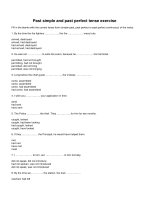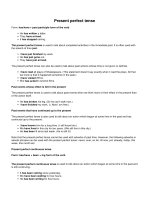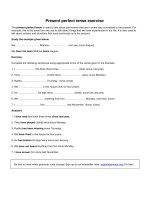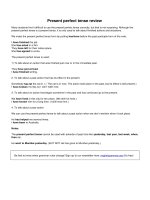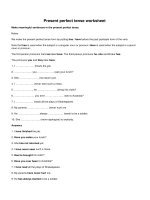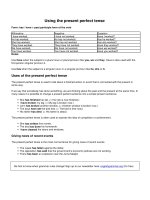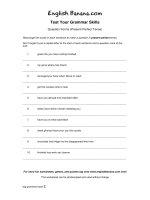Simple present and present perfect tense
Bạn đang xem bản rút gọn của tài liệu. Xem và tải ngay bản đầy đủ của tài liệu tại đây (14.3 KB, 1 trang )
Simple present and present perfect tense
We have already learned that the simple present tense is used to talk about routines. The present perfect tense is
used to talk about events that have just completed.
Study the following sentences.
He goes to office every day. (Routine)
He has just gone to office. (Just completed)
We paint the walls every year. (Routine)
We have just painted the walls. (Just completed)
He goes for a walk every morning. (Routine)
He has just gone for a walk. (Just completed)
She writes a letter every day.
She has just written a letter
The boys learn a new lesson every day.
The boys have just learned a new lesson.
I water the plants every morning.
I have just watered the plants.
Note the use of the adverb just with present perfect tense. Other adverbs commonly used with present perfect
tense are: already, ever, never and yet.
Now study the following sentences.
She calls me every evening.
She has not yet called me this morning.
I eat an apple every day.
I have not yet eaten an apple today.
She tells us a story every evening.
She has not yet told us a story this evening.
The present perfect tense cannot be used with adverbs of past time. For example, it cannot be used with
adverbs like yesterday or last week. However, indefinite past adverbs like never and before can be used with the
present perfect tense.
Stay on top of your writing! Download our grammar guide from www.englishgrammar.org to stay up-to-date.
Powered by TCPDF (www.tcpdf.org)


